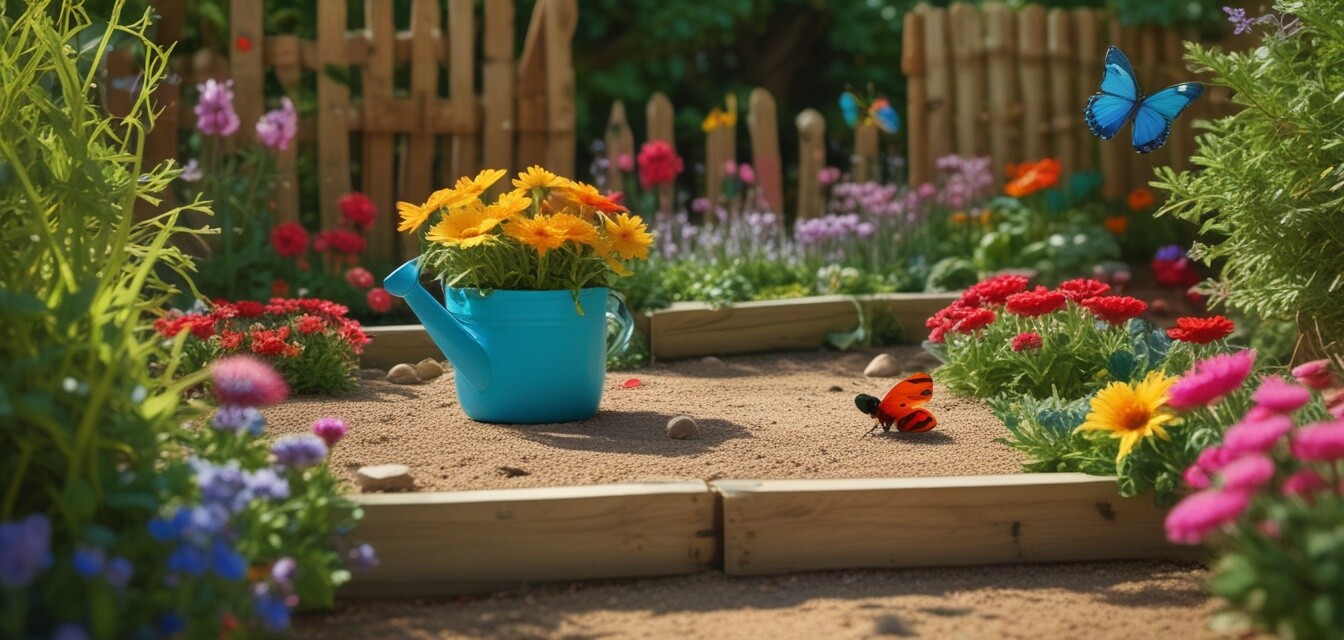
Designing a Kid-Friendly Garden
Key Takeaways
- Incorporate safe plants that are non-toxic to children.
- Design interactive spaces to spark children's curiosity.
- Utilize natural materials for creating fun structures.
- Create sensory areas for a full experience of touch, taste, and smell.
- Plan for maintenance and accessibility to engage children in gardening tasks.
Creating a garden that’s both safe and enjoyable for children provides a wonderful opportunity to engage young ones with nature. A well-designed kid-friendly garden encourages creativity and exploration while ensuring that safety comes first. This article will serve as your guide to designing a captivating garden space tailored to children. From incorporating fun elements to choosing the right plants, you will find inspiration to create a delightful oasis for your little ones.
Choosing the Right Plants
The selection of plants is crucial in making the environment safe and enjoyable for children. Here are some suggestions to help you choose wisely:
| Plant Type | Characteristics | Benefits |
|---|---|---|
| Herbs | Safe and aromatic | Encourage taste exploration |
| Sunflowers | Tall and colorful | Inspire curiosity about growth |
| Snap Peas | Edible and interactive | Promote hands-on activities |
| Marigolds | Bright and cheerful | Teach color recognition |
Creating Interactive Spaces
Children love to explore through play. Incorporating fun and interactive spaces can significantly enhance their gardening experience. Here are some ideas:
- Sandboxes: A designated area where kids can play and dig.
- Mini Greenhouses: Allow children to nurture small plants.
- Water Features: Include a small fountain or pond for sensory stimulation.
- Pathways: Create winding paths made from natural materials or colorful stones.
Using Natural Materials
Utilizing natural materials in your garden design not only blends with the environment but also provides safe play areas for children. Consider the following:
- Wooden Planks: Use for creating garden beds or playful structures.
- Stones: Incorporate smooth stones for pathways or seating.
- Bamboo: Create fun trellises or small structures.
- Mulch: Soft mulch can be used in play areas for cushioning.
Designing Sensory Areas
Engage children's senses by incorporating varied textures, scents, and colors in your garden. Sensory areas may include:
| Sensory Element | Example |
|---|---|
| Texture | Fuzzy lamb's ear or rough bark |
| Color | Vibrant flowers like zinnias |
| Smell | Fragrant herbs like mint or thyme |
| Taste | Strawberries or cherry tomatoes |
Involving Children in Gardening
Incorporating children into the gardening process builds responsibility and a sense of achievement. Consider these engaging tasks:
- Planting seeds or seedlings together.
- Watering plants with their own watering cans.
- Weeding or harvesting the produce.
- Decorating plant pots with paints or natural materials.
Pros
- Encourages outdoor play and exploration.
- Teaches children about nature and responsibility.
- Promotes healthy eating through edible plants.
- Enhances creativity through gardening activities.
Cons
- initial investment in plants and materials may be high.
- Requires regular maintenance and care.
- Potential exposure to sun and pests.
- Children might get dirty during gardening activities.
Conclusion
A kid-friendly garden is a unique way to engage children with nature while ensuring their safety. By selecting suitable plants, designing interactive spaces, using natural materials, and involving children in gardening practices, you pave the way for delightful outdoor experiences. This vibrant environment not only fosters creativity and curiosity but also instills a love for the outdoors in your little ones. Start planning your garden today and watch as it becomes a playground of imagination for your children!
Tips for Designing Your Kid-Friendly Garden
- Research plants that are non-toxic before planting.
- Plan ample shaded areas for hot afternoons.
- Evaluate your garden regularly to update and modify.
- Incorporate fun garden themes like fairy gardens or dinosaur digs.
For more ideas on creating an inviting outdoor area, check out our article on garden inspiration, or explore our gardening tools at Elite Lawn & Garden.